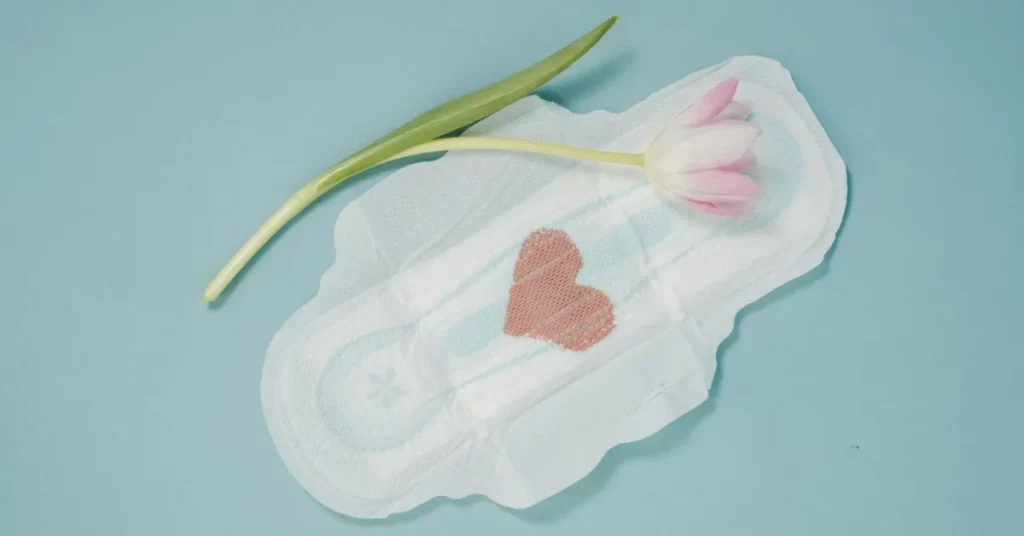Blood stains from your period can create quite a mess, but leaks happen to everyone eventually. Luckily, there are various tips and tricks available—most stains can be treated, although some fabrics may pose more of a challenge than others.
Unless you’re dealing with a favorite pair of jeans, it might not be worth the effort, though we understand how hard it can be to part with a comfy pair of inexpensive underwear (or period panties).
If you choose to tackle the issue, there are several methods to remove blood stains—so don’t lose hope, and don’t hesitate to experiment until you find what works.

Fresh Blood Stains
The key to effectively removing blood stains is to act quickly. If you’re away from home and can’t treat the garment right away, find a nearby sink and blot the stain with cold water (if possible) and a paper towel to absorb as much of the pigment as you can.
For period underwear or cloth pads, rinse them under cold water in a sink until it runs clear. While rinsing immediately isn’t always possible in public, try to do so as soon as you can.
Our Top Recommendation
If you can, the first step I suggest is to fully immerse the garment in cold water. Letting it soak overnight may be all it takes for successful removal. If the stain persists, keep reading.
Things to Avoid
When dealing with blood stains, there are essential things you shouldn’t do. These practices can be the difference between complete removal and permanent marks.

Wash, but Don’t Heat Dry!
You can wash the fabric as often as needed, but avoid putting it in the dryer until the stain is entirely gone. The heat can set the stain, making it much harder to remove. Always air dry the garment and check if the stain remains. Retreat and rewash if necessary.
Cold Water Only
Always use cold water for rinsing and washing. Hot water can set protein stains like blood, complicating removal. This differs from treating most stains, where you usually match the treatment temperature to that of the stain. In this case, stick to cold.
Dealing with Stubborn Stains
Different fabrics react uniquely to treatments, so handle delicate materials like silk or lace with care. You may need to try multiple methods to see what works best. Always start from the edges of the stain and work inward to avoid spreading. A gentle touch with a soft-bristled brush can help; just remember to be gentle with delicate fabrics.
Start by hand rinsing in cold water to eliminate as much blood as possible. If the blood has dried, let it soak in cold water for a few hours before rinsing thoroughly. Repeat as needed.
Plain Table Salt
Salt effectively draws blood from absorbent fabrics. Sprinkle it on or create a paste, allowing it to dry before scraping off and rinsing with cold water. Repeat if the stain remains. If you’re in a pinch, saline solution can also work.
Baking Soda
You can mix baking soda with water to form a paste and apply it to the stain, allowing it to dry before rinsing with cold water. Repeat as necessary.
Soap or Liquid Detergent
For fresh stains, dab a mild soap, stain stick, or detergent onto the area. Rub the fabric together to help lift the stain. You can also let the soap sit for 15-30 minutes before rinsing with cold water.
If you have a stain remover with enzymes, apply it to the stain and let it sit for at least 10 minutes before rinsing. Avoid scented soaps on synthetic fabrics, as fragrances can interfere with absorbency and cause skin irritation.
Saliva
Believe it or not, saliva can help with tiny stains. Apply it to both sides and let it sit overnight before rinsing with cold water. The enzymes in saliva can break down blood, though it works slowly and is best for small spots.
Unseasoned Meat Tenderizer
For larger stains, try sprinkling meat tenderizer on the damp area; its enzymes help break down protein. Let it sit for 15-30 minutes, then rinse with cold water.
Aspirin
Crush two aspirin and dissolve them in warm water, applying the mixture to the stain. Let it sit for a couple of hours and wash as usual. Salicylic acid can neutralize the stain. Alternatively, make a paste for application.
Oxygen Bleach
Dissolve oxygen bleach in hot water (following package instructions) and soak the garment overnight before washing as usual.
Hydrogen Peroxide
If all else fails, hydrogen peroxide can be effective but may bleach or weaken some fabrics, so use it as a last resort. It works best on whites or light colors; test on an inconspicuous area first. Expect bubbling upon application, and let it sit for about 30 minutes before rinsing. Avoid prolonged exposure.
Final Thoughts
When most of the stain appears to be removed, wash the garment in cold water, hang it to dry, and check for any remaining marks. If necessary, repeat the treatment. With reusable period products, occasional stains are just part of life, but these tips should help.
Sometimes, multiple attempts or methods are needed to achieve complete removal. Patience and persistence can yield great results!




